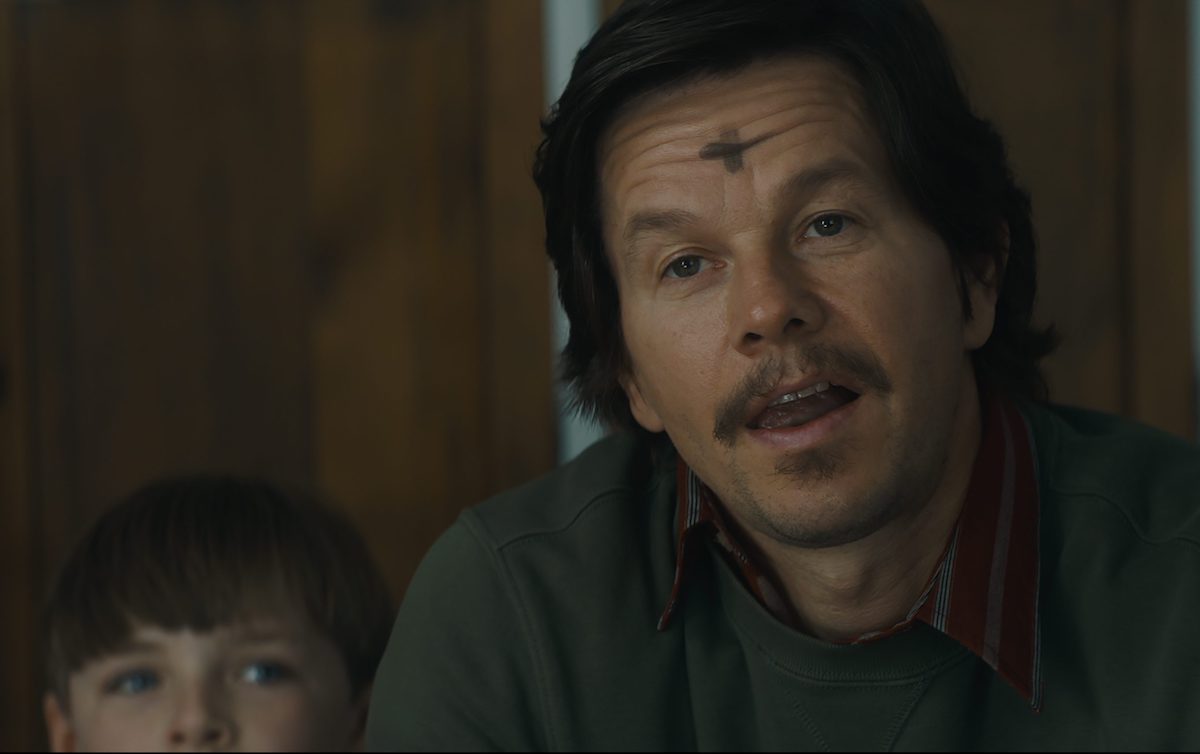This past spring, movie theatres saw the premier of Father Stu, a Sony Pictures film starring Mark Wahlberg as Father Stu and co-starring Mel Gibson as his father. The film is based on the true story of Stuart Long, an amateur boxer from Montana who found God after a near-death experience and eventually became a priest.
As with most film adaptations of true stories, there was enhancement and dramatization added for the silver screen. After seeing the film, I read a more accurate summary of Father Stu’s life and death, and found myself somewhat disappointed that several interesting events and aspects of his life had been left out of the movie. Certain family relationships were changed, details were tweaked, and none of the fascinating spiritual events (spoiler alert!) following his death were included; however, the messages of Father Stu are profound, and the movie is certainly worth seeing to soak up the rich spiritual themes. Given that, this essay focuses on the movie Father Stu itself with regard to those themes and should not be taken as the recounting of a historically accurate biography in every detail.
The first half of Father Stu paints a clear picture of Stuart’s degenerate life. The opening scenes show his piecemeal career as a boxer, the financial instability resulting from that, and the tension in his relationship with both parents, who are clearly separated. Stu’s worldly habits of drinking, smoking, and violence are not hidden from the audience, and his anger at God for the state of his life is rooted in the sudden death of his little brother Stephen when both boys were children.
Despite the obstacles and vices cluttering his life, we see an indomitable spirit in Stu that leads him to try out a new career as an actor in Hollywood. It is there that he meets Carmen, a young Catholic woman who introduces him to faith for the first time. Though Stu doesn’t succeed in hiding from anyone that he’s only doing this Catholic thing to pursue Carmen, he slowly acclimates to the religious worldview, making friends and attending Sunday school classes. However, the anger at God persists; we see that Stu’s family wounds are still raw through his statements about God: “He killed my little brother Stephen when he was six,” and “The last thing I need’s another father to fail for.”
It isn’t until Stu drives home drunk and is nearly killed in a motorcycle accident that he truly opens himself to the power of grace. Sprawled out on the highway, he has a vision of the Virgin Mary, and it is this encounter that leads to his resolve to become a priest. Though Carmen is devastated and both parents try to dissuade him, the indefatigable Stu persists until he is admitted to seminary and begins the road to ordination.
The film reaches its thematic pitch when Stu is diagnosed with a rare muscular disorder that will ultimately kill him. Never one to run away, Stu turns his fighter instincts toward the spiritual battle of surrender to God’s will, and his success on this front as his body deteriorates is seen in the fruits of reconciliation with his family, inspiration to his friends, and unification with Christ.
For me, Father Stu succeeded in depicting several important spiritual themes. The first is the power of surrender and the value of humbly acknowledging failure. Initially, all of Stu’s efforts are focused on the success of his next “project”—a boxing match, a job, a girl, eventually the seminary—and we see him persevere with exuberance and charm through every obstacle, as if success is the inevitable outcome. And he gets there: He wins the fight, he lands the job, he gets the girl, and despite all odds he’s accepted to seminary.
Stu’s unconventional but continual success is juxtaposed within the film narrative with the failure of Stu’s dad, Bill, to be the man he should have been for Stu and his mom. We see Bill’s interior torture at his own failures in several moments scattered through the film when passive onlookers and neighbors witness Bill’s outbursts, causing him to dismiss them in angry embarrassment. Bill cannot bear to be seen in his failure. But Stu, despite noticeable similarities to his father in temperament and habit, transcends his father in this regard. With his terminal diagnosis, Stu learns the final lesson God wants to teach him, one his dad couldn’t learn—to humbly submit to being seen in his failure, the literal failure of his limbs and muscles.
Stu’s grace and humor, shining through his gritty personality as he declines, exude a simple and total surrender to the crucified Christ. Here we see the ultimate Christian paradox exquisitely portrayed: “[W]hen I am weak, then I am strong” (2 Cor. 12:10). And the fruit of Stu’s profound humility extends to the restoration of the father-son relationship, where we see a renewed willingness of both to be seen and embraced by the other in their respective weaknesses. Bill is given the opportunity to serve Stu as his son’s body gives out on him—a chance to redeem his fatherly failures. And it is through Stu’s example and encouragement that Bill finally reaches out for help with his alcohol addiction at the end of the movie.
Failure is something we all experience. Most of us don’t like to acknowledge it and work to keep it off our résumés, but failure presents a unique opportunity to gain an intimate understanding of our limitations, which in turn allows for growth in humility and dependence on God. No true spiritual progress can be made without humility, and failure—particularly being seen by others in our failure —is a rich breeding-ground for humility. Father Stu makes this abundantly and beautifully clear.
The themes of failure and surrender are strongly correlated with the themes of interdependence, family, and community also present throughout the movie. As already mentioned, the father-son relationship is a focal point, but a maternal presence is prominent as well. Stu’s relationship with both his human mother (calling her up when trying to tie his tie for his baptism—“Mama, I need your help!”) and his spiritual mother (dragging himself to a statue of Mary when the diocese refuses to ordain him because of his disease—“She’s gonna help me”) has a simple and trustful character that should mark our own family relationships. Certainly, there is brokenness, and that is where forgiveness comes in for Stu and the people he encounters. But this film subtly reiterates the truth that no matter what our cross is, we can’t carry it on our own. Stu draws strength from those around him, but most importantly he draws it from God, which allows him in turn to be a father and give guidance and inspiration to his community in the midst of and through his intense physical suffering.
There are many other things I could say about this movie, but I want to spend a few words dwelling on what I saw as the most important two minutes of the film. Just after his accident and vision of the Blessed Mother, Stu has a conversation with a friend from church, and at that point he really starts seeking the Lord. It’s just a quick montage of shots—Stu kneeling by the bed, Stu praying out loud on a hill, Stu clutching his rosary—but it shows in a few eloquent seconds where most of the action of the film truly takes place: in the silent journey of Stu’s heart toward God. Though a film of this length can’t possibly relate the full extent of the healing that must have occurred for him to renounce his past life and open himself to the Lord’s call, the interior deepening briefly portrayed is the linchpin that holds together the rest of the movie. From this point on, we see that Stu is wholly the Lord’s, and his life of prayer is what allows him to embrace the ever-present cross in his priestly vocation. It is a lesson for all of us that, as Michael Novak phrased it, “the domain of the transcendent, of course, is mediated by literature, religion, family, and fellows. But it is finally centered in the silence in each person.”
For the two stars of the film, Mark Wahlberg and Mel Gibson, both Catholic themselves, Father Stu’s story has personal resonance. Wahlberg has called this film, “The most important film that I’ve ever done.” After making a name for himself in Hollywood with critical and box office successes such as Boogie Nights, Ted, and Transformers: Age of Extinction(which took in more than $1 billion worldwide), he decided to use his platform to tell a story that reflected his faith and even his own path of redemption, but in a way that didn’t soften rough edges or preach to the choir. Father Stu is the result.
Wahlberg, like Stu, has a history of violence and incarceration in his youth, and Gibson, like Bill, admits to struggling with alcoholism in his past, as well as feeling his own failures as a father; yet both men place their faith and trust in a God who restores. The realism and feeling behind both performances may indicate their identification with a clear message: “I don’t think anybody’s beyond redemption.”
Overall, Father Stu may not get all the biographical details right and even gloss over some of the very messy parts of redeeming a broken past and mending strained relationships. (It’s Hollywood, after all.) But it does a good job of presenting the true-to-life character of Fr. Stuart Long as a wounded yet heroic man of God. It does this most prominently by shedding light on both our all-too-human weakness and the remedy for it.
Chock-full of humorous yet profound quotes, Father Stu is also a moving testimony to the merit of choosing humility and gratitude instead of anger; communion with God and others in our weakness; silence and prayer over distraction; and union with the cross of Christ above all. It is a reminder to view all the suffering we experience in this life, in the words of Father Stu, as a “momentary affliction preparing us for eternal glory.”

